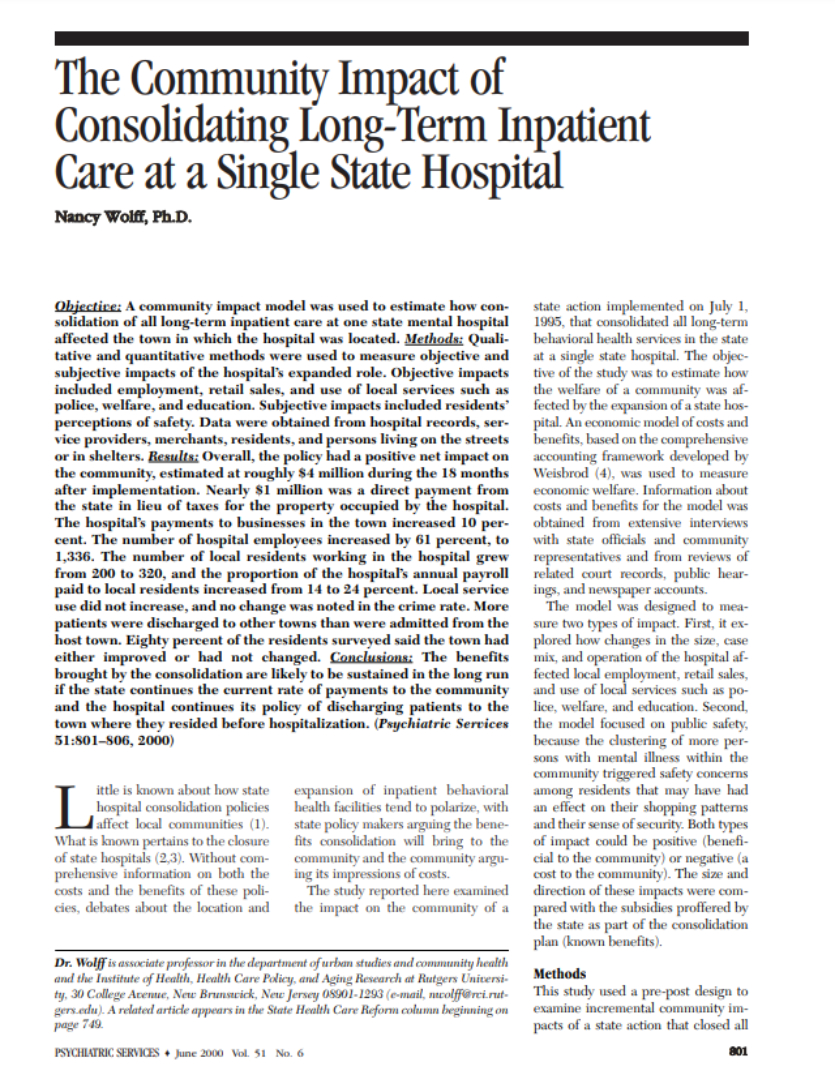Objective: A community impact model was used to estimate how consolidation of all long-term inpatient care at one state mental hospital affected the town in which the hospital was located. Methods: Qualitative and quantitative methods were used to measure objective and subjective impacts of the hospital’s expanded role. Objective impacts included employment, retail sales, and use of local services such as police, welfare, and education. Subjective impacts included residents’ perceptions of safety. Data were obtained from hospital records, service providers, merchants, residents, and persons living on the streets or in shelters. Results: Overall, the policy had a positive net impact on the community, estimated at roughly $4 million during the 18 months after implementation. Nearly $1 million was a direct payment from the state in lieu of taxes for the property occupied by the hospital. The hospital’s payments to businesses in the town increased 10 percent. The number of hospital employees increased by 61 percent, to 1,336. The number of local residents working in the hospital grew from 200 to 320, and the proportion of the hospital’s annual payroll paid to local residents increased from 14 to 24 percent. Local service use did not increase, and no change was noted in the crime rate. More patients were discharged to other towns than were admitted from the host town. Eighty percent of the residents surveyed said the town had either improved or had not changed. Conclusions: The benefits brought by the consolidation are likely to be sustained in the long run if the state continues the current rate of payments to the community and the hospital continues its policy of discharging patients to the town where they resided before hospitalization.
The community impact of consolidating long-term inpatient care at a single state hospital
Citation:
Wolff, N. (2000). The community impact of consolidating long-term inpatient care at a single state hospital. Psychiatric Services, 51(6), 801-806. doi: 1176/appi.ps.51.6.801
